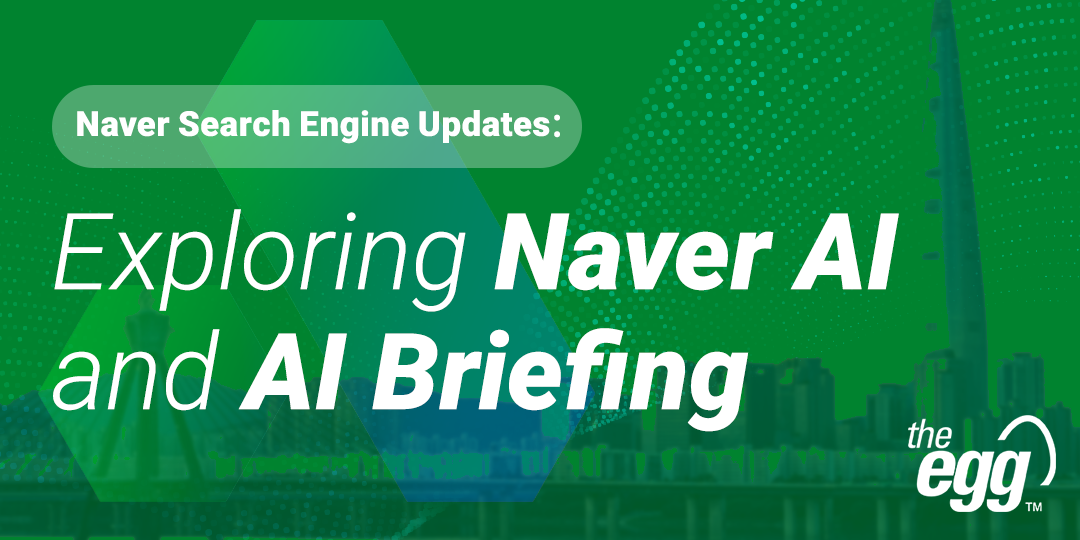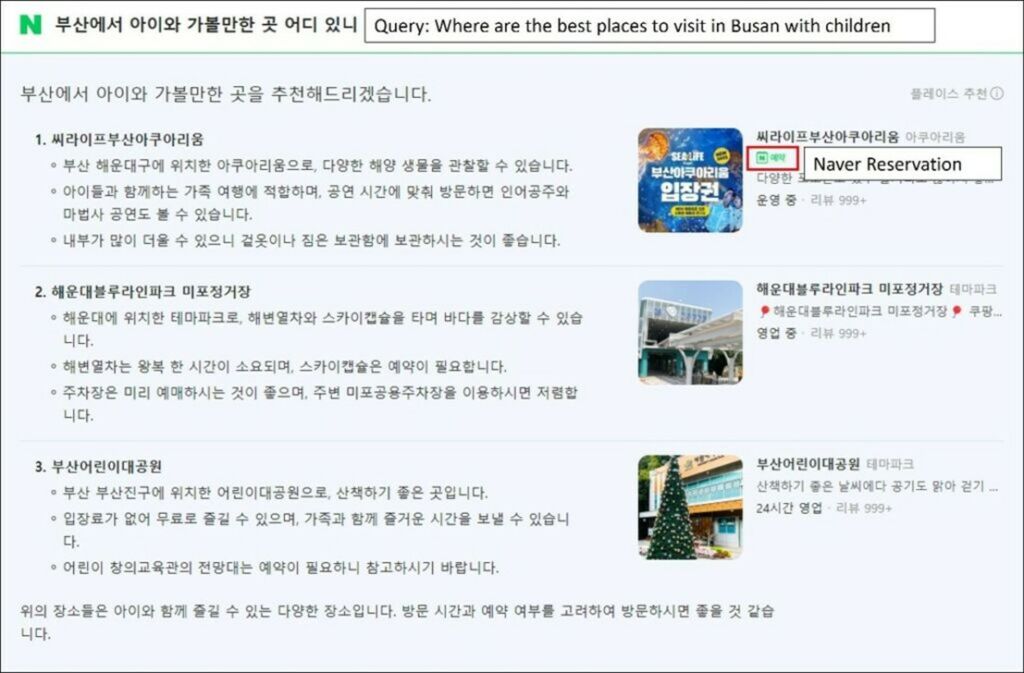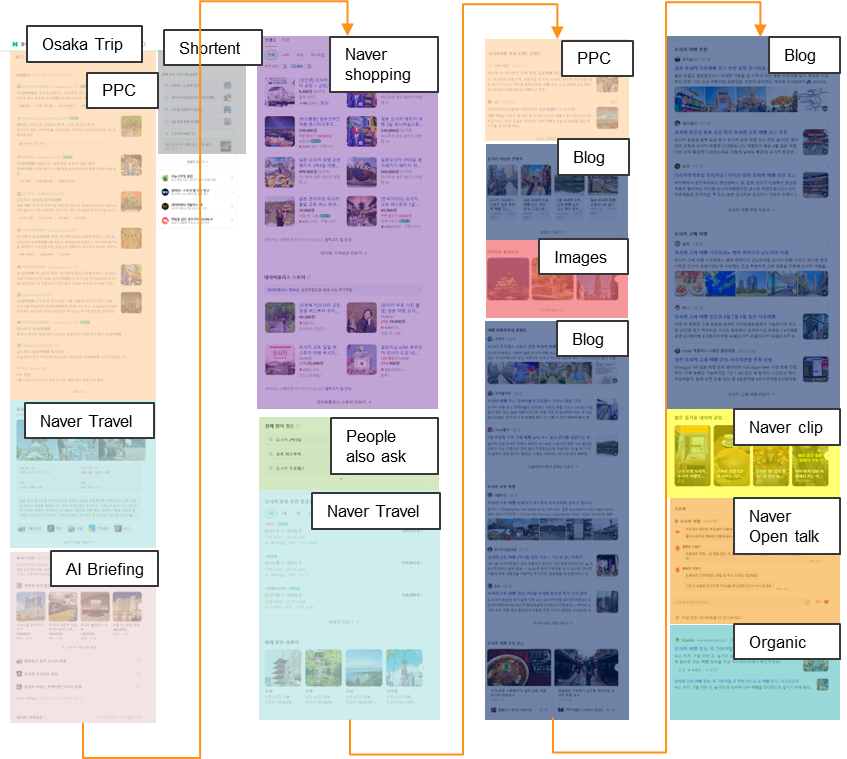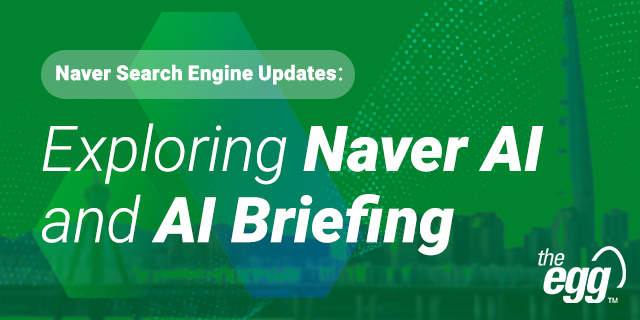Naver Search Engine Updates: Exploring Naver AI and AI Briefing

As South Korea’s dominant search engine, Naver offers a uniquely structured digital ecosystem that differs from global platforms like Google. For brands and marketers targeting the Korean market, staying informed on Naver’s evolving AI technologies and SERP dynamics is critical for maintaining visibility and driving engagement.
In this article, we examine Naver’s latest advancements in search AI, key interface updates, and what they mean for the future of SEO strategy in Korea.
Understanding Naver’s Search AI: Cue:, Shortents, and AI Briefing
Recent updates to Naver’s search algorithm and user interface are powered by Naver AI technologies. Each plays a distinct role in enhancing how search results are generated and displayed.
1: Naver Cue:
Naver Cue:’s multi-step reasoning
Released in December 2023, Naver Cue: applied multi-step reasoning to interpret nuanced search intent. By processing complex queries through sequential logic (see diagram above), Cue: aimed to reduce hallucinated results and provide semantically coherent answers.
Cue: result for ‘where are the best places to visit in Busan with children’ query
Cue:’s interface resembled Google’s AI Overview, offering a summarized view of the most relevant information. However, the Cue: service was officially discontinued in March 2025. Insights gained from user interactions and search behavior during Cue:’s operation are now being utilized to enhance AI Briefing.
2: SHORTENTS
Shortents is Naver’s AI-powered short content search service, designed for efficient trend discovery and content recommendation. It uses generative AI, including HyperCLOVA X*, to summarize popular online content into trending topics across various categories. The Shortents panel, located at the top-right of desktop search results, provides an at-a-glance topic summary and serves as an entry point to this service. Updated hourly, Shortents captures engaging trends that users may not actively search for.

Shortents is designed to help users discover new content and topics rather than provide direct search query matches. It achieves this by focusing on three key functions:
- Understanding nuanced search intent.
- Identifying core keywords and themes.
- Organizing content into subtopics for clarity.
Unlike traditional search, Shortents’ keyword basis reflects real-time relevance and user preferences, enabling Naver to offer smarter, more intuitive, and personalized recommendations.
*HyperCLOVA X is Naver’s large language model optimized for Korean culture and language. It was trained on decades of high-quality Korean text, including 50 years of news and 9 years of blogs, and outperforms many global models in Korean language tasks. This foundation allows Shortents to more precisely reflect nuanced Korean cultural context and user intent.
Ready to maximize your digital marketing in Korea?
3: ai briefing
AI Briefing offers condensed summaries of the most relevant search results, linking original sources. Rather than simply condensing a list of links, AI Briefing provides recommended, contextually relevant content that supports the user’s query. This makes it a valuable tool for enhancing the overall search experience.
AI Briefing result for ‘property tax payment period’ query
Since AI Briefing is currently in limited release, the feature is only triggered for select queries. Naver is actively expanding its capabilities to support a broader range of search queries. At present, it is primarily activated for queries related to travel, places, definitions of trending terms or memes, and practical how-to information relevant to everyday life.
Additionally, the placement of AI Briefing varies depending on the query. For some queries, it appears at the top of the SERP while for others, it may show in the second position or even below search ads. The positioning is still evolving so continuous monitoring is necessary to track these changes.

Compared to Google’s relatively clean layout, Naver’s SERP is much more dynamic. Here is an example of search results from “Osaka Trip” first page alone includes a wide array of content types:
- Paid Ads
- Naver travel
- AI Briefing
- Naver Shopping
- People Also Ask
- Blog
- Images
- Videos
- Naver Open Talk
- Organic
SERP for ‘Osaka trip’ query
With the rollout of Naver AI-powered features, the Naver SERP is seeing the following changes:
- Shortents now appears at the top-right corner
- AI Briefing is usually positioned near the top, though it might not always be above paid ad listings.
Naver Search Engine’s Evolving Ranking System
To stay competitive in the search landscape, Naver is refining its prioritization logic through A/B testing and AI-assisted modeling. Its current ranking criteria are centered on three pillars:
Three Core Ranking Factors
Relevance
This factor evaluates the semantic similarity between the user’s query and the content by analyzing keyword frequency. The keyword placement within the content, and overall contextual alignment are measured in this factor. The goal is to ensure the results closely match the user’s search intent.
Content Quality
Naver assesses content authority and trustworthiness by examining backlink profiles, the diversity and richness of content formats, and the frequency of content updates. High-quality content from regularly maintained sources are favored.
User Preferences
User engagement metrics such as dwell time, repeat visits, click-through patterns, and other behavioral signals are integrated to gauge the practical value and relevance of the content from the end-user perspective. This dynamic feedback helps Naver adapt rankings in real time.
Naver Search Engine A/B Testing
Naver is currently conducting A/B tests to refine its keyword ranking prioritization logic, focusing on designed to accomplish two main goals:
Surfacing More Trustworthy, Relevant Content
To deliver more meaningful results, Naver is enhancing its ability to understand user intent and query context. By aligning content more closely with nuanced search needs, the platform aims to present results that are not only relevant but also trustworthy and high in quality.
Accelerated Feedback Loops
Naver is upgrading its search system to learn from user behavior more quickly and effectively. With faster feedback cycles, trending and high-quality content surfaces more promptly, ensuring the SERP dynamically reflects real-time user interests and evolving search patterns.
Key Takeaways: What This Means for SEO in Korea
Naver remains the dominant search platform in Korea. For any business targeting the Korean market, a strong SEO strategy that aligns with Naver’s evolving AI-driven ecosystem is essential.
Shortents and AI Briefing are reshaping how users access and understand information through Naver AI, capturing and reflecting user intent more effectively. This shift encourages content strategies that emphasize semantic clarity and topical depth, in other words, clear and thorough content.
Understanding and adapting to Naver’s SERP innovations is no longer optional. It is essential for anyone aiming to build a meaningful digital presence in Korea. As the platform advances toward deeper personalization and real-time relevance, content strategies must evolve accordingly, focusing on quality, intent alignment, and user experience–driven optimization.









